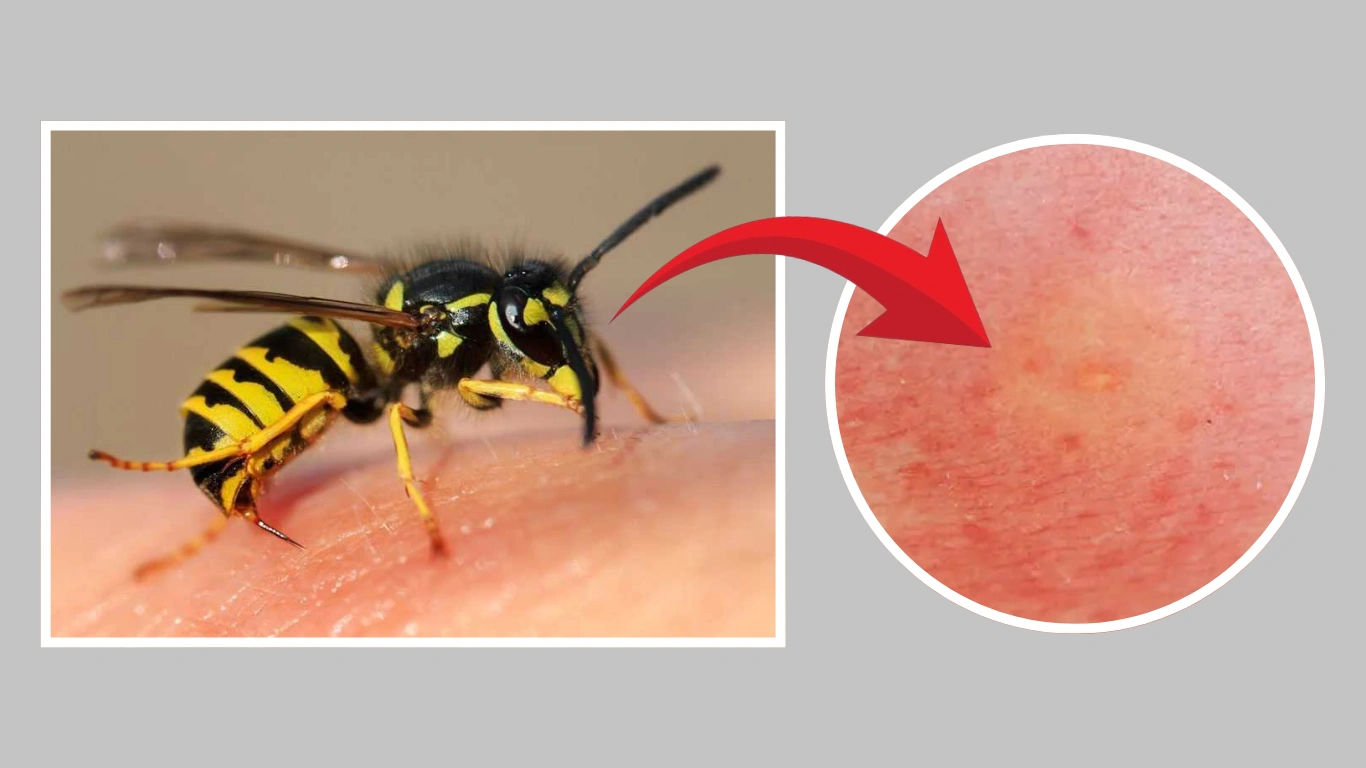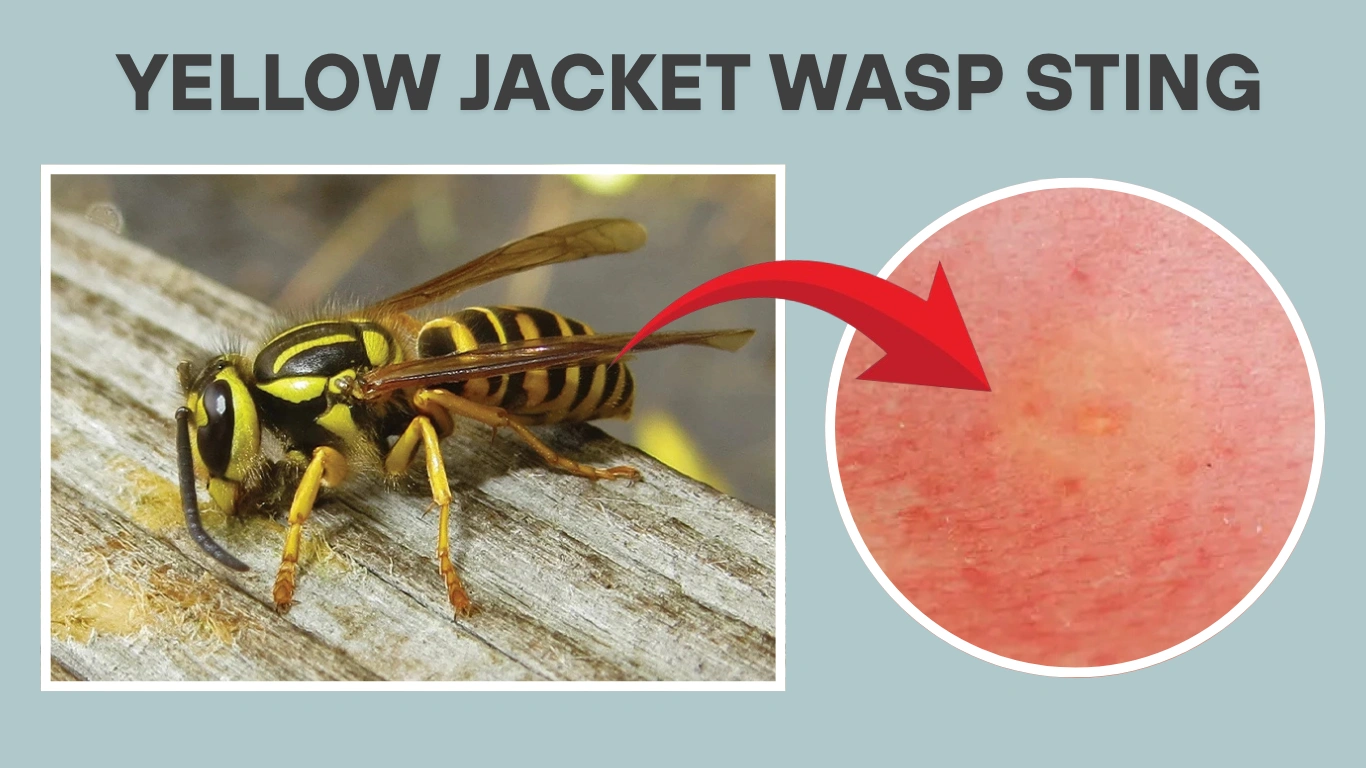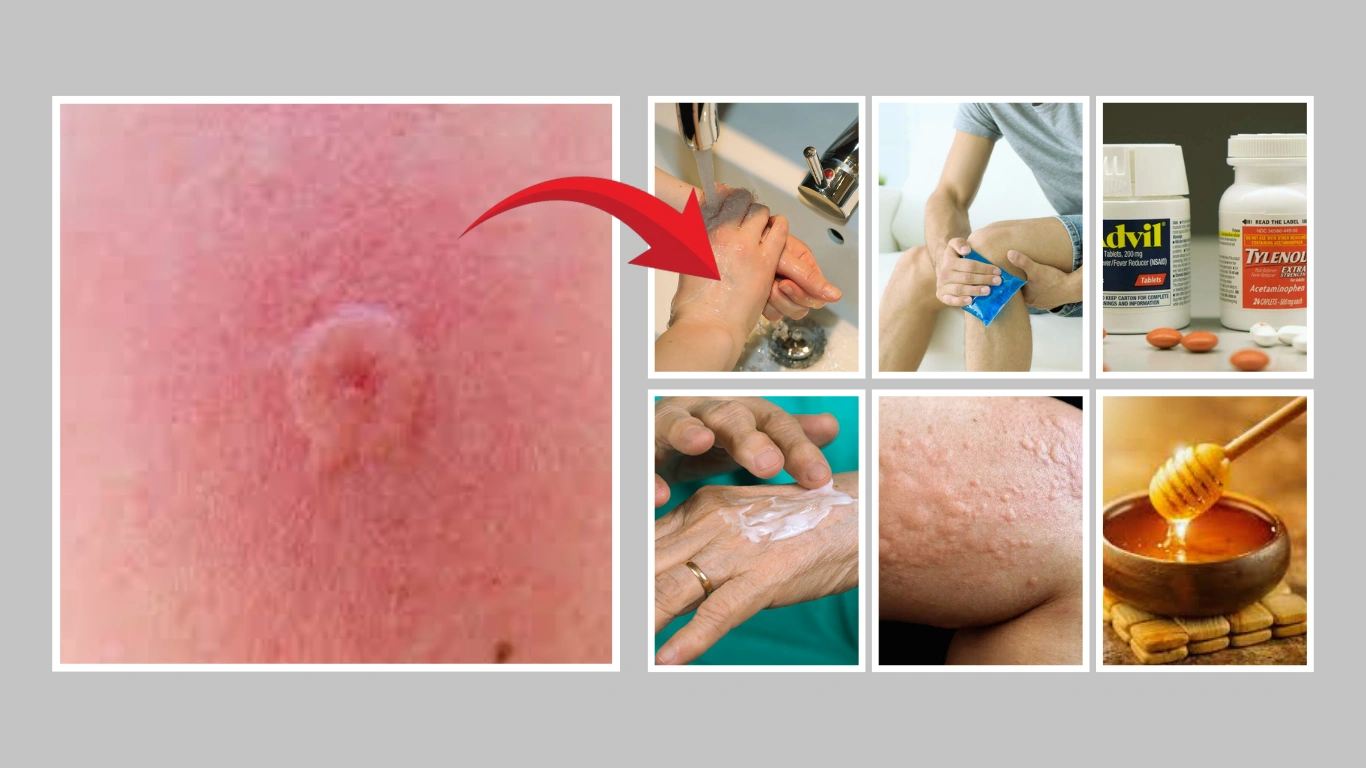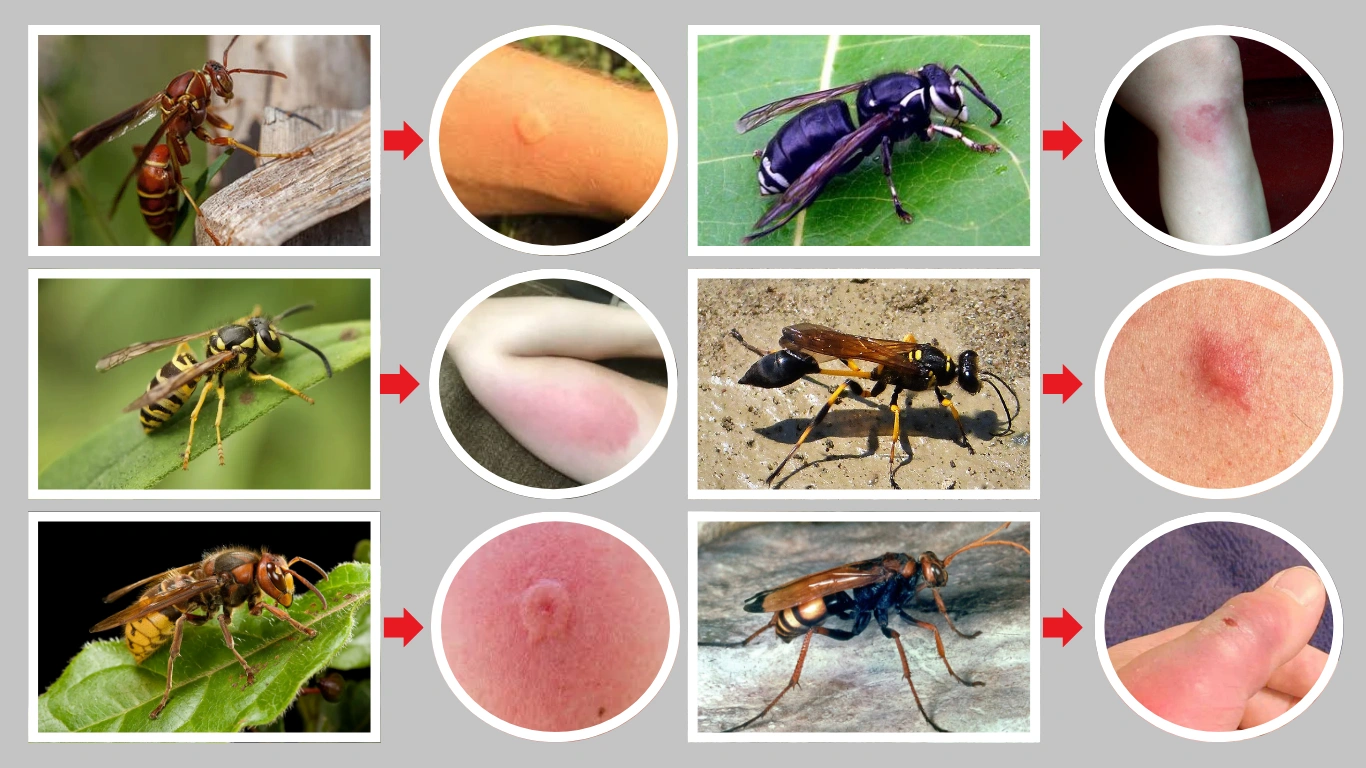Getting stung by a wasp can be a painful surprise, whether you’re gardening, hiking, or just enjoying the outdoors. While many stings cause mild discomfort, others can lead to serious reactions. In this guide, I’ll walk you through how to identify a wasp sting, what symptoms to watch for, effective treatments, and essential tips to stay safe and sting-free.
Wasp Sting Identification
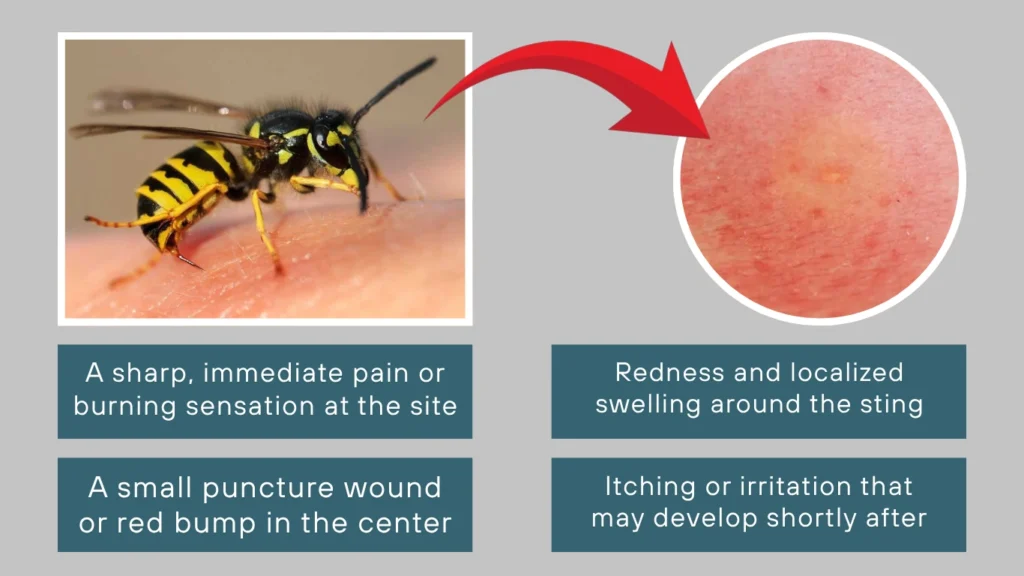
Before treating a wasp sting, it’s important to know whether the insect responsible was truly a wasp. Wasp stings have some distinct characteristics compared to bee or hornet stings. Here’s how you can identify one:
How to Identify a Wasp Sting
- A sharp, immediate pain or burning sensation at the site
- A small puncture wound or red bump in the center
- Redness and localized swelling around the sting
- Itching or irritation that may develop shortly after
- No stinger left behind (unlike bees)
Common Locations Where Wasps Sting
Wasps often target exposed skin, especially:
- Arms and hands
- Legs and ankles
- Neck, face, or scalp (especially if disturbed near the head)
Wasps can sting multiple times, so multiple welts or punctures may be present if you were swarmed or provoked a nest.
Symptoms of a Wasp Sting
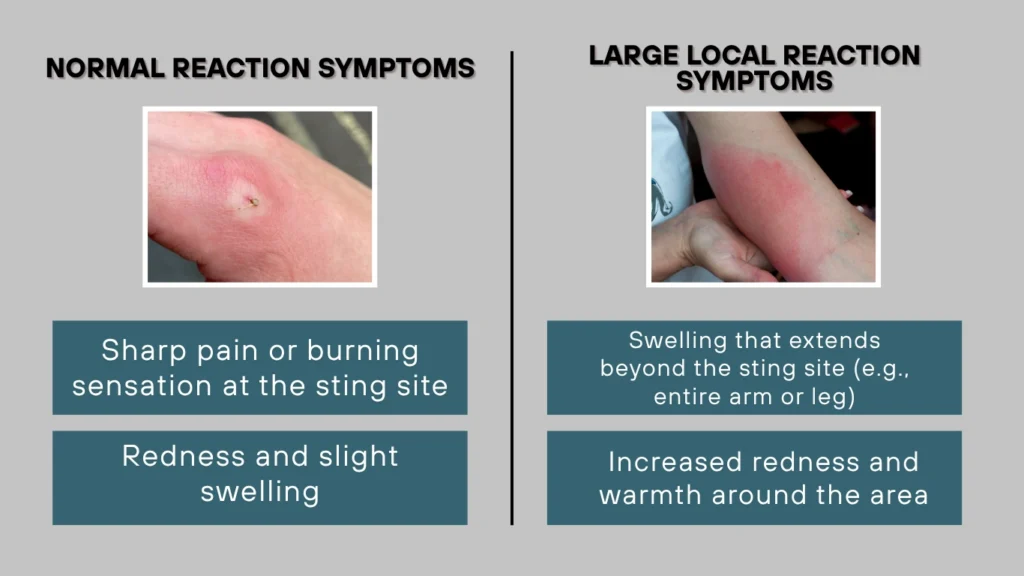
Wasp sting reactions can vary depending on the person’s sensitivity, the number of stings, and where the sting occurred. Most stings cause mild discomfort, but some can lead to larger or more serious responses.
Normal Reaction Symptoms
For most people, a wasp sting causes a mild local reaction:
- Sharp pain or burning sensation at the sting site
- Redness and slight swelling
- Mild itching or tenderness
- Symptoms usually subside within a few hours to a day
Large Local Reaction Symptoms
Some individuals experience a stronger reaction, known as a large local reaction (LLR). Symptoms may include:
- Swelling that extends beyond the sting site (e.g., entire arm or leg)
- Increased redness and warmth around the area
- Mild fever or fatigue in some cases
- Discomfort that may last up to 5 to 10 days
Allergic Reaction Symptoms (Mild to Severe)
An allergic reaction, also known as anaphylaxis in severe cases, requires immediate medical attention. Watch for:
- Hives, itching, or rash spreading from the sting site
- Swelling of the lips, face, tongue, or throat
- Difficulty breathing or wheezing
- Dizziness, lightheadedness, or fainting
- Rapid heartbeat or anxiety
- Nausea, vomiting, or diarrhea
If any of these symptoms occur, seek emergency help immediately.
Treatment for Wasp Stings
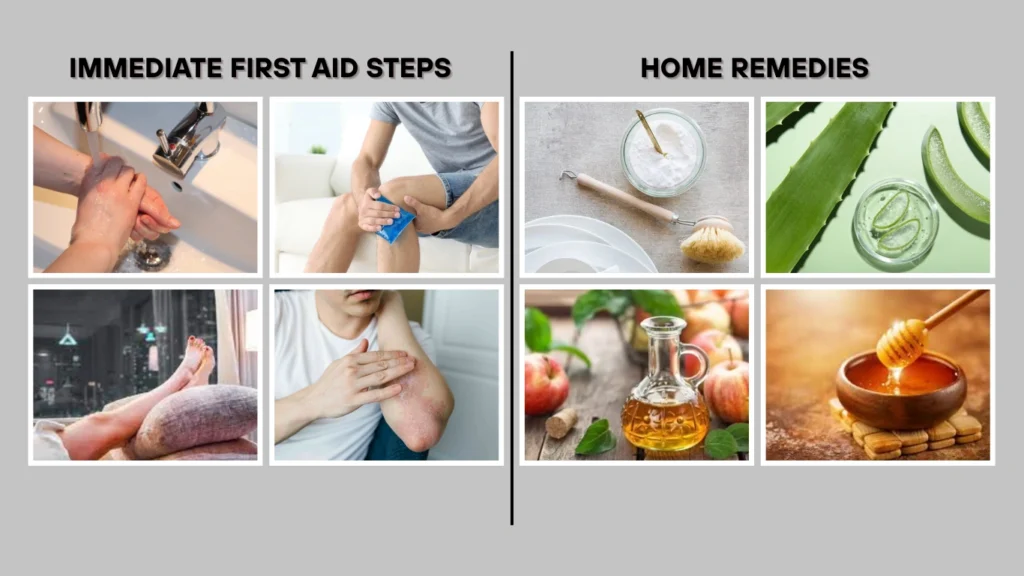
Proper treatment after a wasp sting can greatly reduce pain, swelling, and the risk of complications. Here’s how to respond quickly and effectively depending on the severity of the sting.
Immediate First Aid Steps
- Clean the area: Gently wash the sting site with soap and water to prevent infection.
- Apply a cold compress: Use a wrapped ice pack or cold cloth on the area for 10–15 minutes to reduce swelling and pain.
- Elevate the area: If the sting is on a limb, elevate it to minimize swelling.
- Avoid scratching: This can cause irritation or lead to infection.
Home Remedies
- Baking soda paste: Mix baking soda with water and apply to the sting to neutralize the venom.
- Aloe vera gel: Soothes the skin and reduces inflammation.
- Apple cider vinegar: May help neutralize the venom and relieve discomfort.
- Honey: Natural antibacterial properties can ease itching and promote healing.
Over-the-Counter Medications
- Antihistamines (like diphenhydramine or loratadine): Reduce itching, redness, and swelling.
- Pain relievers (ibuprofen or acetaminophen): Help ease sting-related pain or discomfort.
- Hydrocortisone cream: Applied topically to reduce inflammation and itching.
When to Seek Medical Attention
- If the person shows signs of a severe allergic reaction (swelling of throat, trouble breathing, fainting)
- If the sting site becomes increasingly red, swollen, warm, or starts oozing pus (signs of infection)
- If the sting is inside the mouth, near the eyes, or multiple stings occur
- If swelling or pain worsens after 24–48 hours despite treatment
Acting fast and knowing when to seek help can make a huge difference, especially in preventing allergic complications.
Wasp Sting vs. Other Insect Stings
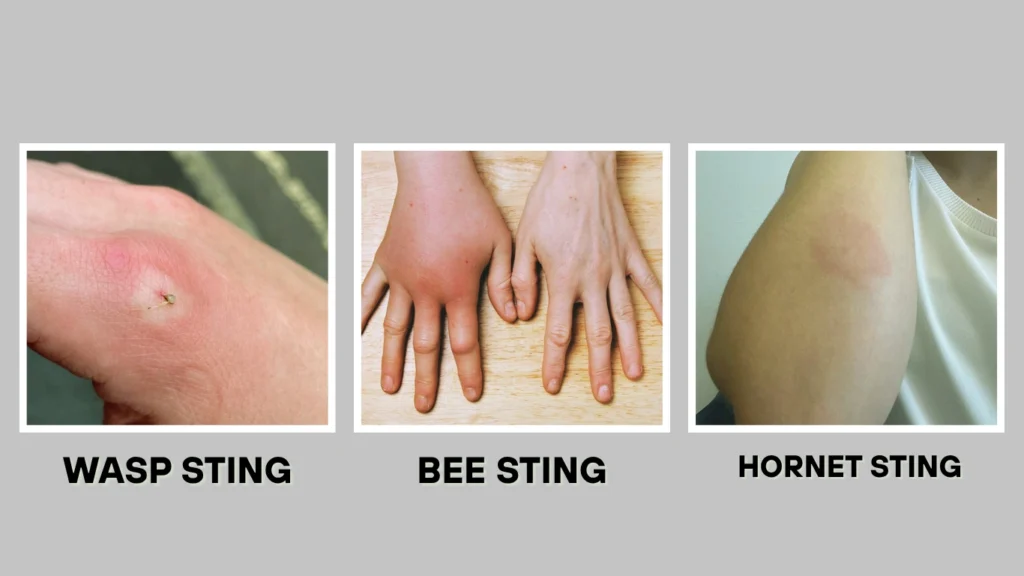
It’s easy to confuse a wasp sting with those from other insects like bees or hornets. However, there are key differences that can help you identify the culprit and choose the best treatment.
| Feature | Wasp Sting | Bee Sting | Hornet Sting |
| Stinger | Does not leave a stinger | Leaves stinger behind (especially honeybees) | Does not leave a stinger |
| Number of Stings | Can sting multiple times | Usually stings once and dies | Can sting multiple times |
| Pain Intensity | Sharp, immediate pain | Painful but typically less sharp than wasps | Often more painful due to higher venom potency |
| Swelling | Mild to moderate swelling | Often causes more visible swelling | Causes intense swelling over a larger area |
| Reaction | Burning or stinging sensation | May cause more itching and redness | May cause systemic symptoms if multiple stings occur |
| Aggression | Territorial, will sting when threatened | Less aggressive unless provoked | Highly aggressive, especially near nest |
| Appearance | Yellow and black, slim body | Fuzzy body, golden-brown or black | Larger, more robust, usually dark with white/yellow marks |
How to Prevent Wasp Stings
Avoiding a wasp sting starts with awareness and a few simple habits that make a big difference when you’re outside, especially in warmer months.
Avoiding Wasp Encounters
The most important step is to stay away from wasp nests. These insects are extremely territorial and can become aggressive if they feel threatened. If you notice a nest—whether hanging under an eave, hidden in a shed, or buried in the ground—keep your distance and don’t try to disturb it. If a wasp flies near you, don’t swat at it. Quick movements can provoke a sting. It’s best to remain calm and slowly walk away.
Clothing choices can also influence how likely you are to attract wasps. Bright colors and floral patterns may draw them in, as can heavily scented perfumes, lotions, or hair products. Choosing neutral tones and unscented personal care items is a safer bet if you’re heading outdoors in wasp-prone areas.
Protective Measures
Simple steps around the home and during outdoor activities can also help. Wearing closed shoes when walking in grassy areas prevents accidental stings to the feet. When eating or drinking outside, keep everything covered since wasps are attracted to sugary and protein-rich foods. Be especially careful with open cans or bottles, as wasps can crawl inside unnoticed.
At home, make sure trash cans are sealed tightly, and clean up food waste quickly. Wasps often nest near reliable food sources. It’s also smart to inspect around your home—especially under rooflines, decks, or furniture—for nests forming during the spring and summer. Catching them early can prevent a bigger problem later.
Special Cases
While most wasp stings follow a typical pattern of symptoms and recovery, certain situations require special attention—especially when children or pets are involved. Their bodies may respond differently, and extra care is often necessary.
Wasp Stings in Children
Children are often more sensitive to insect stings, both physically and emotionally. A wasp sting on a child may result in more noticeable swelling or longer-lasting pain compared to adults. They might not always communicate clearly about what happened, so it’s important to look for sudden crying, scratching, or visible redness.
To treat a child’s sting, begin with gentle first aid—washing the area, applying a cold compress, and using a child-safe antihistamine if recommended. Comfort is just as important; reassure them and keep them distracted to prevent scratching. Always watch closely for signs of an allergic reaction, especially if it’s their first sting.
Wasp Stings in Pets
Dogs and cats often get stung on the face, nose, or paws while exploring or chasing insects. Swelling around the muzzle or paws is common, and pets may whine, paw at the area, or seem unusually agitated. In most cases, the sting will resolve with minimal treatment, but it’s important to monitor them closely.
Apply a cool compress and try to keep your pet calm and still. If you notice excessive swelling, drooling, vomiting, or difficulty breathing, contact a veterinarian immediately—these may indicate an allergic reaction. Unlike humans, pets can’t tell you how they feel, so erring on the side of caution is always best.
FAQs
Here are some quick answers to common concerns about wasp stings, especially helpful if you’re looking for clear, no-nonsense advice after being stung.
How long do wasp sting symptoms last?
Mild symptoms like pain, redness, and swelling usually go away within a few hours to a day. Larger local reactions can last several days, while allergic reactions may require longer recovery depending on severity.
What should I do if I get stung and have no reaction?
If you feel fine after the sting, just clean the area and monitor it for 24 hours. No reaction likely means you’re not allergic, but future stings could still cause a different response.
Can a wasp sting get infected?
Yes, though it’s rare. Signs of infection include increased redness, warmth, pus, or red streaks from the sting site. If you notice any of these, see a doctor.
Should I remove the stinger from a wasp sting?
No need. Wasps do not leave their stinger behind, unlike bees. Trying to remove a stinger from a wasp sting can irritate the area unnecessarily.
Is a wasp sting more dangerous than a bee sting?
Not necessarily. Both can cause pain and allergic reactions. However, wasps can sting multiple times and may be more aggressive. The danger depends on your individual reaction and the number of stings.
